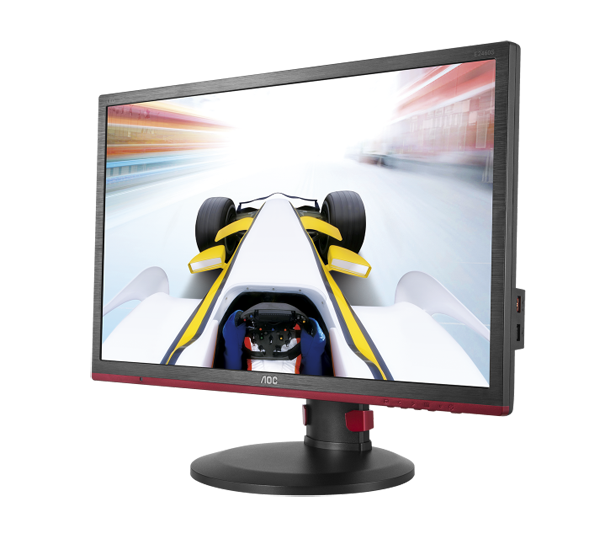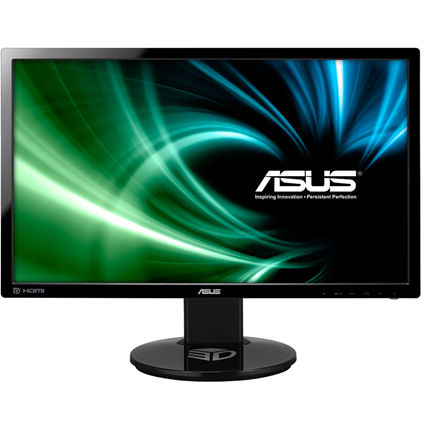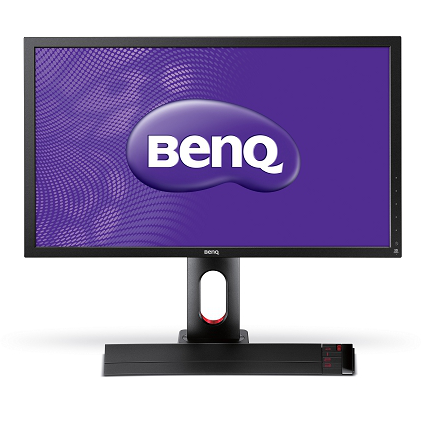Early Verdict
These days, it’s hard to justify buying a gaming monitor without adaptive refresh. But the least expensive screens still leave the feature out to cut costs. For under $300 though, you can have the next best thing – 144Hz. That extra speed, coupled with a capable graphics board, enables smooth gaming performance with very low lag and almost no tearing. The G2460PQU represents a fading genre but remains a good value with solid color performance. FHD resolution means you won’t need an expensive video card to achieve 100fps and up. And its 24” size makes it reasonably portable. FreeSync has opened up adaptive refresh to a large group of budget-conscious users but this AOC is still a slightly better deal.
Pros
- +
low input lag
- +
fast panel response
- +
contrast
- +
high output
- +
good post-calibration accuracy
Cons
- -
no G-Sync or FreeSync
- -
TN panel
Why you can trust Tom's Hardware
Can A 144 Hz FHD Display For $250 Achieve Gaming Nirvana?
Already, 2014 has proven to be a great year for gamers. Beyond the fast, efficient CPUs, amazingly powerful graphics configurations, and gorgeous 4K displays, we're seeing more monitors with high refresh rates for gaming, along with technologies like Nvidia's G-Sync. As new capabilities are added and specification sheets grow to include the corresponding jargon, it's more important than ever to quantify what sets all of the options apart. We've received a ton of reader requests for more gaming monitor coverage, so we're sharpening our focus on that genre.
By now, it's commonly accepted that high refresh rates are a key ingredient in a monitor able to anchor the most fully-loaded gaming rigs. When you spend four figures on graphics cards alone, you don't want to flip on v-sync and get stuck at 60 Hz. That'd be like trying to drive a Ferrari in Manhattan.
Displays capable of running at 144 Hz are fairly rare in the PC world. However, we just received our third example from AOC, the brand-new G2460PQU. We’ve mentioned before that many HDTVs run at 120 and even 240 Hz, and many of you have wondered why the same is not true for monitors. The distinction is that HDTVs cannot accept a signal faster than 60 Hz. For the most performance-sensitive games, you want a display that can actually process a 144 Hz signal, and that just doesn’t exist in the realm of television.
| Panel Type | TN Film |
|---|---|
| Backlight | W-LED, edge array |
| Screen Size | 24-inch |
| Max Resolution | 1920x1080 |
| Max Refresh Rate | 144 Hz |
| Aspect Ratio | 16:9 |
| Native Color Depth | 8-bit (6-bit w/FRC) |
| Native Gamut | sRGB |
| Response Time (GTG) | 1 ms |
| Brightness | 350 cd/m2 |
| Speakers | 2 x 2 W |
| VGA | 1 |
| DVI | 1 |
| DisplayPort 1.2 | 1 |
| HDMI 1.4 | 1 |
| Audio In, 3.5 mm | 1 |
| Headphone | 1 |
| USB v2.0 | 1 up, 4 down |
| Media Card Reader | - |
| Panel DimensionsW x H x D | 22.3 x 15.5 x 9.6 in566 x 394 x 244 mm |
| Panel Thickness | 2 inches / 51 mm |
| Bezel Width | 0.6-1 inched / 15-25 mm |
| Weight | 13.9 lbs / 6.3 kg |
| Warranty | Three Years |
If you read our reviews of the BenQ XL2720Z (a 27-inch screen for $450) and Asus VG248QE (a 24-inch display priced at $270), this screen's specs will look pretty familiar. It is unfortunate that manufacturers still have to rely on a 6-bit/FRC TN panel to run at rates higher than 60 Hz. But for now, that is another universally accepted constant. Overlord Computer is attempting to buck the trend with its IPS-based Tempest X270OC, which we expect to review very soon. But a monitor like that is the exception, not the rule.
The principal hurdle to moving pixels at a high rate is bandwidth. A TN part has a much easier time dealing with 120 or 144 Hz refresh rates because its processing demand is much lower than that of an 8-bit IPS display. We’ve seen enough examples to say that image quality is not noticeably impacted by the reduced bit depth. Frame Rate Conversion continues to be an effective means of rendering 8-bit color with a 6-bit native LCD panel.
While the G2460PQU is new to gamers in the U.S., it’s been available abroad for several months. Comparisons to the Asus and BenQ 144 Hz displays are inevitable. The base specs are nearly identical. But there is one feature AOC doesn’t offer, and that’s any sort of motion blur reduction.
We talked quite a bit about BenQ’s Blur Reduction, which strobes the backlight between frames and can help reduce or eliminate motion blur at the expense of light output. Asus’ VG248QE does the same thing if you connect it to an Nvidia LightBoost-enabled graphics board. AOC, however, does not offer a comparable capability. Is this a potential deal-breaker? We’ll go into more depth about the implications on page nine, after our response and lag tests.
Get Tom's Hardware's best news and in-depth reviews, straight to your inbox.
Aside from that one omission, the G2460PQU's specs suggest that it's a well-made gaming-oriented screen with the sort of performance attributes discerning enthusiasts are looking for. Let's see if those figures bear out in practice.
Current page: Can A 144 Hz FHD Display For $250 Achieve Gaming Nirvana?
Next Page Packaging, Physical Layout, And Accessories
Christian Eberle is a Contributing Editor for Tom's Hardware US. He's a veteran reviewer of A/V equipment, specializing in monitors. Christian began his obsession with tech when he built his first PC in 1991, a 286 running DOS 3.0 at a blazing 12MHz. In 2006, he undertook training from the Imaging Science Foundation in video calibration and testing and thus started a passion for precise imaging that persists to this day. He is also a professional musician with a degree from the New England Conservatory as a classical bassoonist which he used to good effect as a performer with the West Point Army Band from 1987 to 2013. He enjoys watching movies and listening to high-end audio in his custom-built home theater and can be seen riding trails near his home on a race-ready ICE VTX recumbent trike. Christian enjoys the endless summer in Florida where he lives with his wife and Chihuahua and plays with orchestras around the state.
-
PandaV4 I have a AOC G2460P monitor myself, and a unpleasant surprise was that refresh rate of 144 Hz wasn't supported if using the DisplayPort connection. Does G2460PQU have the same limitations, or does it actually support 144 Hz over DisplayPort?Reply -
PandaV4 After some googling it seems that G2460PQU and G2460P is the same model. So beware if you want to use Displayport you wont be able to use the 144 Hz setting too! And this doesn't have any blur reduction either! It seems there is actually a new updated model to be released this month the AOC G2460PG. And it has nvidia g-sync support and blur reduction, and supports 144 over dIsplayport.Reply
TL;DR: G2460PQU = DO NOT BUY, G2460PG = BUY. -
ceberle Reply13687399 said:I have a AOC G2460P monitor myself, and a unpleasant surprise was that refresh rate of 144 Hz wasn't supported if using the DisplayPort connection. Does G2460PQU have the same limitations, or does it actually support 144 Hz over DisplayPort?
The PQU does accept 144 Hz over DisplayPort.
-Christian- -
PandaV4 Reply
A bit of googling brought up this article - http://pcmonitors.info/reviews/aoc-g2460pqu which says: " The image provided by DisplayPort is very similar on this monitor and it should also support the maximum (144Hz) refresh rate. Unfortunately that was not the case during our testing" and "The PC resolutions below this should feature 1920 x 1080 with 100Hz, 120Hz and 144Hz selectable – but that isn’t the case.". It seems there are different revisions of this monitor with the same model number. So if you buy one of those than you are practically gambling about the 144 Hz support.13688062 said:13687399 said:I have a AOC G2460P monitor myself, and a unpleasant surprise was that refresh rate of 144 Hz wasn't supported if using the DisplayPort connection. Does G2460PQU have the same limitations, or does it actually support 144 Hz over DisplayPort?
The PQU does accept 144 Hz over DisplayPort.
-Christian-
-
npyrhone Will we ever see here a review of even one non-TN gaming monitor? The reduced color depth renders to image quality absolutely disgusting.Reply
I will be the first one to congratulate you when you publish the next review of a monitor with a non-TN panel working over 60Hz. -
3Dns I have that model too and i buy it after a HP 23xi IPS LED Panel.Reply
I understand that.
It doesnt worth 300€ for this model. All you need is 60hz and 24" Panel that you can take it with 120€. For me IPS Panels offer you way better colors so for me its better. Now if you want it for a GTX780 and above and you wanna play over 60FPS it may worth.
But have in mind that a normal monitor cost ~120$ and this model cost double. You can spend that money in other hardware areas like better GPU for example. -
Adroid Sorry, but I won't ever buy another 1080p "gaming" display. 1920x1200 is vastly superior for "gaming" screens, and it's a shame the industry has veered away from it.Reply
I guess the thought process involves "and you can watch HD movies on it". Needless to say the 16:9 ratio is cheaper for manufacturers, and it's a great sales pitch. Well, give me a break. I got suckered into that line of thinking and I probably watched 2-3 movies on my "gaming" 23 inch monitor in 4-5 years.
Let's keep the movies where they belong in the living room and re-focus "gaming" screens where they should have never left - in the 16:10 aspect ratio. -
alchemy69 If a game isn't enjoyable at 60Hz it isn't going to be enjoyable at 144Hz. And if it is enjoyable at 144, it still will be at 60. I've had some of the greatest fun over the last 30 years playing on tiny monitors, at low resolution and probably less than 30fps. I don't need the industry telling me what I need to have fun just so they can move more product.Reply


